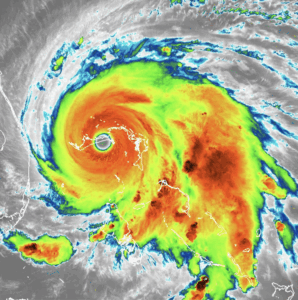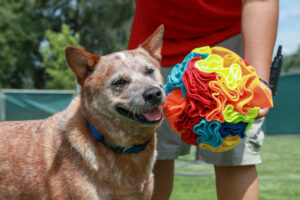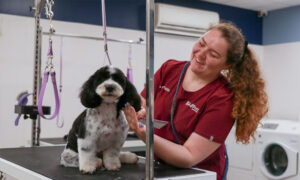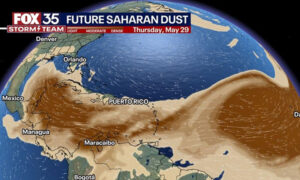Saharan Dust Storms in Ocala: What Pet Parents Should Know
As the owner of Red Fern Pet Lodge in Ocala, Florida, I want to bring attention to a seasonal phenomenon that can affect our canine companions: the Saharan dust storms. Over the years, we have noticed an increase in respiratory issues generally starting late spring and continuing through most of the summer. As a kennel operator, reported respiratory issues are like a screaming air raid alarm because it is the kennels that often mistakenly get blamed for these illnesses that are generally referred to as canine cough (Bordetella). This common illness is rarely born in kennels but rather brought into kennels by infected dogs OR caused by other factors, such as the Saharan dust storms.
At Red Fern, we invested heavily in air filtration systems, and our wonderful staff performs daily cleaning routines. So each summer, if we would hear of a reported respiratory issue, I would scratch my head wondering what else we could do. But then I began to converse with our local veterinarians and most times they would point to the Saharan dust storms this time of year. So, I got busy and compiled some information on this environmental phenomenon. May you find it interesting and, hopefully, informative.

Understanding the Saharan Dust Storm
Originating from the Sahara Desert, these dust storms, known as the Saharan Air Layer (SAL), are massive plumes of mineral dust that travel across the Atlantic Ocean, reaching the southeastern United States, including Florida. These events are most frequent from late June through early August, with new plumes leaving Africa every 3 to 5 days during this period. (We Were Wondering: a TCEQ Blog, https://www.mysuncoast.com)
Environmental Effects
While the SAL can suppress hurricane development due to its dry air and strong winds , it also carries fine particulate matter (PM2.5) that can degrade air quality. These particles can linger in the air for several days, posing health risks to both humans and animals. (https://www.mysuncoast.com, American Lung Association)
Impact on Dogs’ Respiratory Health
Dogs, like humans, can be affected by the inhalation of fine dust particles. Exposure can lead to respiratory symptoms, especially in dogs with pre-existing conditions. Symptoms to watch for include:
- Coughing
- Sneezing
- Nasal discharge
- Eye irritation (redness, watering)
- Lethargy
- Difficulty breathing (Loop News, WUFT)
These symptoms can often be mistaken for canine cough (Bordetella), a contagious respiratory disease often believed to originate in dog facilities. However, if multiple dogs exhibit these symptoms simultaneously during a known SAL event, it’s more likely due to environmental factors rather than an infectious disease. (FOX 35 Orlando)
Recommendations for Pet Owners
To protect your dog during Saharan dust events:
- Limit Outdoor Activities: Keep walks and playtime short, especially during peak dust times.
- Indoor Air Quality: Use air purifiers with HEPA filters to reduce indoor dust levels. [Red Fern Pet Lodge is equipped with numerous air filtration units and UV filtration.]
- Monitor Health: Watch for any respiratory symptoms and consult your veterinarian if they occur. [Red Fern has staff members known as Health Supervisors whose primary role is to daily monitor the health of dogs staying with us.]
- Stay Informed: Keep an eye on local air quality reports and SAL forecasts. (WUFT)
At Red Fern Pet Lodge, we prioritize the health and well-being of your pets when they are with us. Throughout the year, and particularly during SAL events, we perform measures to ensure our facility maintains optimal air quality and that outdoor activities are adjusted accordingly. If you have concerns about your dog’s health during these times, please don’t hesitate to reach out to us or your veterinarian.
– Dick Andrews, Proud Owner of Red Fern Pet Lodge & Certified Professional Animal Care Operator





